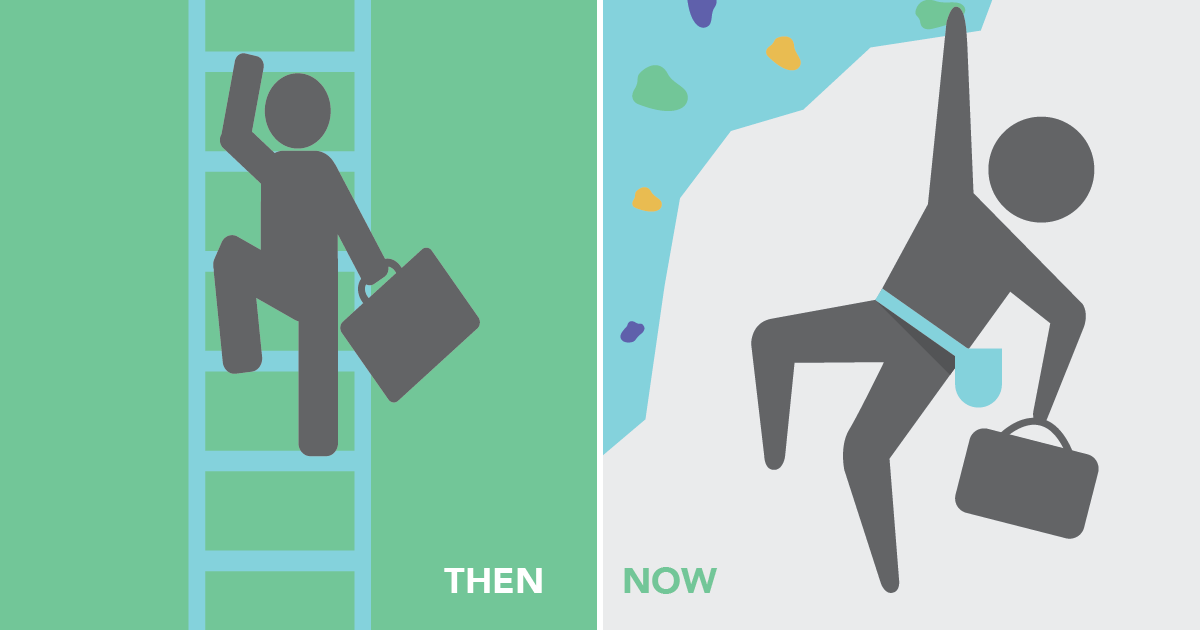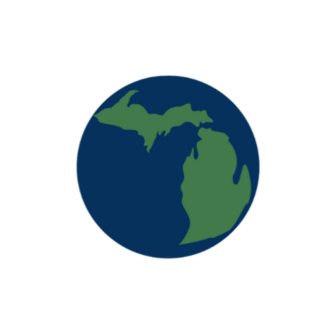![]() This blog is authored by Lucie Howell, Director of Learning and Engagement at The Henry Ford.
This blog is authored by Lucie Howell, Director of Learning and Engagement at The Henry Ford.
We asked Lucie to author a post to help readers understand how different teaching and learning looks like when it is designed to prepare students to be career rock climbers rather than climbing a career ladder.
These past few weeks, I have been reminded of just how much young people inspire me. The clarity of their voices, their ideas, their thoughts, their enthusiasm and their commitment are incredible and infectious. I find my heart uplifted by their belief that together we can make transformational change that can build to a better future for all. I need that because working with others to make meaningful change in the learning experiences of young people and adults alike is a marathon not a sprint. I get asked all the time by my non-education friends; ‘Why do you bother? What is the point? Nothing changes.’
Well, let me tell you why I do this work. It is for those amazing young people, who inspire me. They deserve my time, energy, and commitment because previous generations ensured I had more opportunities to discover my potential than they did. And I take it as my responsibility to pass that gift forward to the next generation. As one of my mentors puts it, “To whom much is given, much is expected.” Recently, I heard a metaphor from Michigan Future’s Lou Glazer that nailed what my work in education has been all about. He said that the education systems we are working with now were designed to prepare people for the career ladders of the past and not the career rock faces of today and the future. What he meant was that with the increased rate of change in our work, society and lives that has derived from technological advancement, we need to develop talented people who are prepared to be flexible and adaptable both in the work they are doing and in their expectations of how and where that work will come from. In short, we need to provide learning experiences that arm our young people with the tools to move forward without always having a specific and clear end-point or ‘correct’ outcome in mind. So, what does that look, sound and feel like?
A few weeks ago I found myself at a student-led high school conference focused on the changing face of Detroit and Michigan, surrounded by those inspiring young people sharing what we at The Henry Ford (THF) think that looks, sounds and feels like. These young people were eager to understand and make a difference in the communities in which they live, and as the Director of Learning & Engagement at THF, I was asked to provide a historical context to the current changes and revitalization of the city and the state. Focusing the presentation on how stories of American innovation, resourcefulness and ingenuity from our 300 years of archives can be used to inspire and unleash our human potential today, I shared how the innovators and innovations of the past transformed our society over the years, and how THF has leaned into the responsibility of sharing our amazing stories as a way of inspiring people to recognize the power of human potential and unleash their own. Through our work in innovation education, we developed a learning framework (shared below) that can describe our historical stories in today’s language of innovation so that people can activate their own potential. Our work in this area makes me a firm believer that we are all able to innovate; in our schools, in our communities, in our workplaces and in our lives, and when we unleash that ability together we create opportunities to transform the future. That’s what history teaches us.
As you can tell, I think about learning a lot. As an engineer by head and an educator by heart, I care about us all losing out on our collective human potential because our society has set up systems that without meaning to, limit how our innovative potential is recognized and encouraged. Over the past few weeks though, I’ve become hopeful again. I’ve remembered what I already knew after 20 years in education. Lean into young people. They want us to make changes for the better. They need us to make changes for the better. They are demanding that we work with them to ensure they are prepared for the world and the future we will all share together.
The Henry Ford Model I Learning Framework
This framework powered by 90 years of curation of our stories of American ingenuity, resourcefulness and innovation, and 8 years focused on Innovation Education. It is made up of two frames; (1) Habits of Innovator and (2) Actions of Innovation that can be used together to describe the innovation journeys within our collection, and activate learners of today through their own innovation journeys.
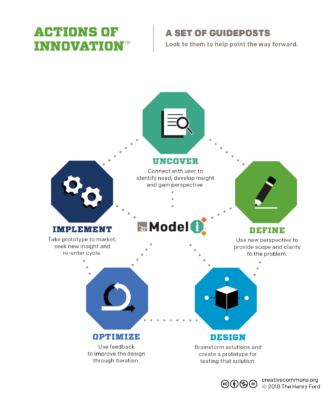
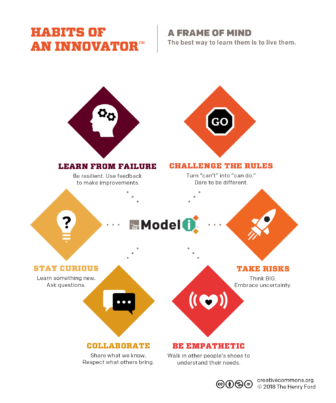
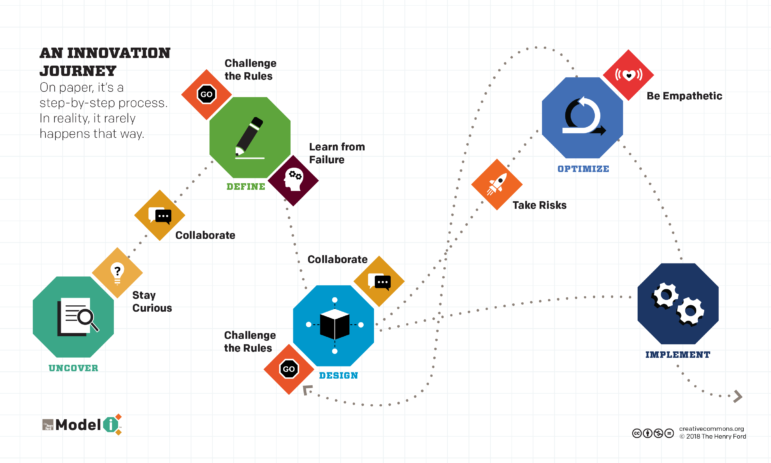
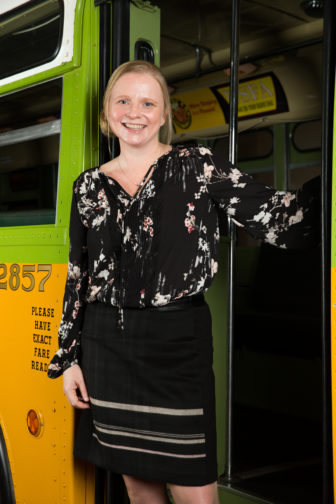 Lucie Howell has been the director of learning and engagement at The Henry Ford since 2016. Howell is responsible for leading the strategic growth of the institution’s educational initiatives and implementation and further development of unique learning tools, materials, processes and experiences for educators, students, parents and life-long learners.
Lucie Howell has been the director of learning and engagement at The Henry Ford since 2016. Howell is responsible for leading the strategic growth of the institution’s educational initiatives and implementation and further development of unique learning tools, materials, processes and experiences for educators, students, parents and life-long learners.
Howell brings nineteen years of experience in STEM educational outreach to The Henry Ford. Her focus for the organization has been to grow and deepen its impact on students and life-long learners through the use of collections, museums, digital resources and programs to increase innovation literacy. She also leads the development and creation of tools, materials and strategies for the organization’s field trip and learning experience programs, along with ensuring the continual integration with Henry Ford Academy and Henry Ford Learning Institute’s network of schools.
Prior to joining The Henry Ford, Howell served as STEM Director at Teach for America Connecticut. Among her many responsibilities she led and managed a team consisting of STEM instructors and general discipline teacher coaches to design and develop blended learning products and programs in partnership with John Hopkins University School of Education. Her extensive expertise also includes serving as the director of the Bristol-Myers Squibb Center for STEM Teaching & Learning at Quinnipiac University and also as the academic program officer for Pipeline Development and Transfer Student Support Center for Engineering Diversity and Outreach at the University of Michigan.

